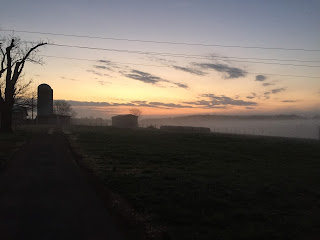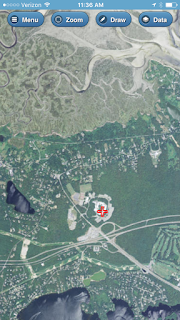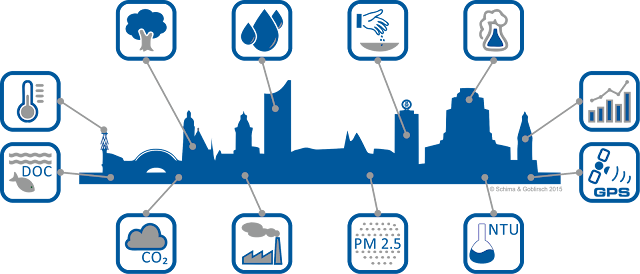A recent publication by the General Administration Office
(GAO) (Open Innovation
Practice to Engage Citizens and Effectively Implement Federal Initiatives)
sends an important message to Citizen Science (CS) organizations: public agencies
will soon be knocking at your door, seeking to partner up with your organization,
motivated by the need to achieve greater impact by enlisting CS enthusiasm, knowledge
and resources.
Such partnering opportunities face significant challenges,
driven by differences inorganizational cultures, both technical (e.g., reaching
agreements on protocols) and administrative (e.g., project scheduling and
reporting). Assuming that a common vision and an action plan are in place would
leave the protagonists with worrying about the tools that would make the
partnership work. Since the most valuable outcome of the partnership is data
(and the knowledge that comes with it), it is obvious that a system for
managing data is key for success. To
address this challenge, we at myObservatory offer a solution that combines the
myObservatory Environmental Information Management System (EIMS) with an
Enterprise Manager (EM), or in short myO/EM.
The vision that guided us at myObservatory
(myObservatory.org) in developing myO/EM led to this outcome:
(1) myO/EM allows the partners to pursue a well-defined set
of common-core, coordinated activities, and at the same time, and in addition, allow
each of the partners to pursue their particular agenda.
(2) myO/EM maintains the highest professional standards in
all aspects of the data acquisition process, including field data acquisition,
documentation and quality assurance, reporting, integrity of the data base and
compliance with data management requirements set by relevant public agencies.
myObservatory is documented extensively at
myobservatory.org. So I will focus here more on the EM component. myO/EM is
designed to face the challenges of a multi-stakeholder collaboration by
supporting common-core activities while at the same time enabling each of the partners
to pursue their own programs. Using the EM component, the group coordinator can
manage projects and members; disseminate instructional material and guidelines;
assimilate authorized data from the common core areas and analyze it using
statistical and graphical tools; set standards for all common activities
starting from field methods all the way to data labeling; create and share
forms; monitor compliance of partners with set project guidelines; devise and
implement quality assurance measures; generate reports; analyze trends and set
alerts; and manage compliance with data management guidelines that could be
mandated by funded projects.
myO/EM controls who can do what and when with any subset of
the data following user-provided guidelines. It queries questionable data
entries. It maintains the integrity of the database (including chain of
custody, keeping records of edits and reversing unwarranted changes. And it
also makes sure that data does not go out the door as people come and go. It
maintains professional backups.
Quality assurance (QA) is at the heart of any project, and particularly
so when facing a broad diversity in user skills. There are several types of
errors that we cover in myO/EM: grammatical errors, physical plausibility
errors, and out of range errors.
Grammatical errors mean, for example, writing 1.a3 instead of 1.03. QA
means catching this error and alerting the parties entering the data and those
managing it. Errors in physical plausibility means entering values outside of
the range of acceptable values for a certain parameter. This could mean, for
example, entering 17 for pH or a negative value for rainfall. Identifying data
that’s out of range means identifying trends in data and detecting data entries
that could be potentially, out of range, but could also be real. When you have
multiple organizations involved, a trickle of data entry errors could become an
avalanche, so it must be controlled at the source. Questionable data entries
must be identified at the source. The myO/EM platform has built-in automated QA
analytical tools that would flag questionable data as soon as it is entered.
This has significant cost savings: you do not want an army of data checkers poring
over data the days before a major report is due, scrambling to come up with
corrections.
myO/EM assists users with implementing new functionality
that could be used by the entire community of partners. This could include, for
example, selecting technological solutions (on both the software and hardware
sides). Technologies, whether developed in-house or imported, could be managed
through myO/EM. A technology platform that is commonly used opens the door for negotiating
favorable arrangements with external suppliers, anywhere from purchasing
sensors to developing solutions for managing legacy data.
In addition to supporting the common-core activities, the myO/EM
tools mentioned above are also available to support the partners’ independent activities
residing outside of the common core. For example, there could be a set of forms
that could be used by all partners in support of common-core activities, and there
could be others that are owned and used by any subset of the partners, one or
more, with or without sharing. The independent and common-core work areas are
firewalled.
Let us not forget what motivates such partnership: it is the
large-scale data acquisition, and this means mobility and diversity of data
acquisition modes. myO/EM supports a variety of data entry modes: manually, by
sensors, using mobile devices, data files (spreadsheets, pictures, documents) uploads
and direct lab feeds.
Finally, there is the issue of customization. No two
projects are the same. There is always a need to customize the EIMS for the
particular needs of a project. And that could easily be done with myO/EM.
To summarize, myO/EM is a hybrid information management
system that allows the partners to work together in the common core and separately
and independently outside of the common core.
myO/EM is now available. Visit our site (myobservatory.org)
or send me a note (yoram.rubin@webh2o.net).
And, as a reminder, the single organization version of myObservatory is
available for free for any non-profit CS. You can sign up on our website.












































